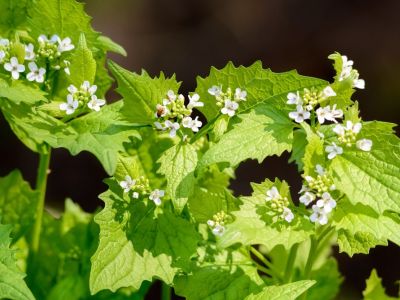Why Garlic Mustard Management is Important
Garlic mustard was first introduced to Europe and used both medicinally and for cooking. Garlic mustard plants are also known as garlic mustard weeds because they produce hundreds of seeds per plant. These seeds travel on the fur of large animals, such as horses and deer, and also in flowing water and by human activity. It is because of this, garlic mustard spreads in woodlands and quickly takes over native woodland wildflowers. When this happens, it’s a good idea to know how to control garlic mustard plants.
How to Control Garlic Mustard Plants with Small Infestations
When infestations are small, hand-pulling plants is the best way of killing garlic mustard. Pull plants early in the season before they flower. Also, pull plants, being sure to get as much root as possible, while the garlic mustard weeds are small and the soil is wet. Tamping the ground after removal will help keep the plants from re-sprouting. If it is too difficult to pull plants, you can cut them as close to the ground as possible before they form seeds as part of your garlic mustard weed control.
Garlic Mustard Weed Control with Large Infestations
Garlic mustard weed control needs to be aggressive when infestations are large. Burning large patches of garlic mustard in the fall or spring is sometimes effective. However, three years of burning may be required to fully eliminate the weed. More severe infestations may be controlled chemically by using a glyphosate solution in late fall or early spring. However, caution should be used when working with glyphosate for killing garlic mustard, as it will also kill other vegetation in its path.
